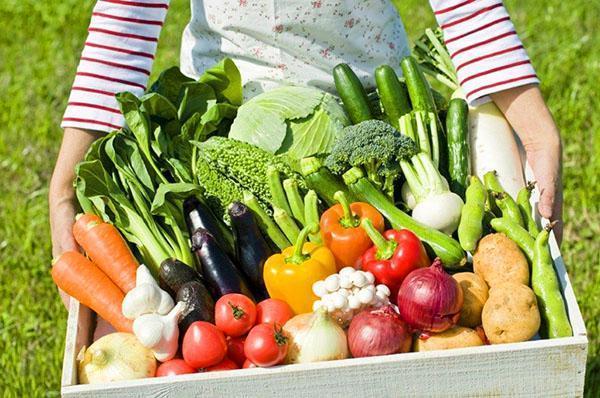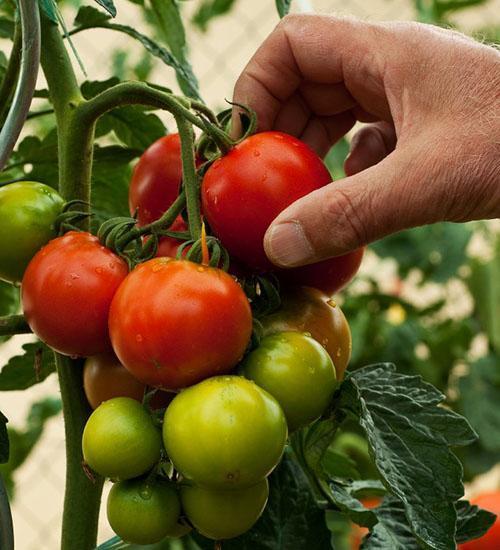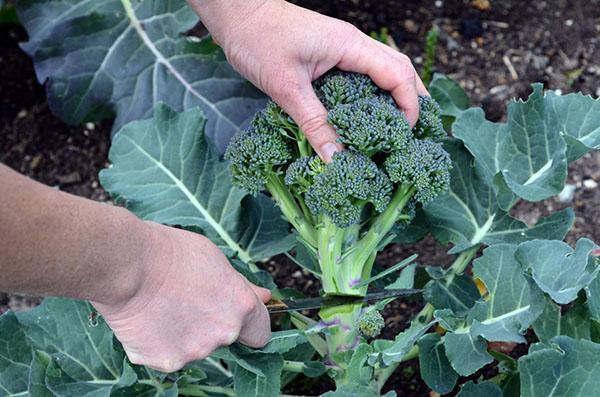The work of the summer resident in the garden beds in August
 In August, summer is coming to an end, but the work on the country beds is still far from completion. The vegetable garden pleases with the harvest of vegetables, which will soon become preparations for the winter. Ahead is the sowing of autumn crops, preparation of the site for next spring and, of course, taking care of plants whose growing season is not over yet.
In August, summer is coming to an end, but the work on the country beds is still far from completion. The vegetable garden pleases with the harvest of vegetables, which will soon become preparations for the winter. Ahead is the sowing of autumn crops, preparation of the site for next spring and, of course, taking care of plants whose growing season is not over yet.
Harvesting in garden beds in August

For many plants, it is important to collect regularly. If reddened tomatoes remain on the bushes for a long time, they inhibit the filling and ripening of the next. You can increase productivity by removing fruits that are just starting to turn red. They ripen perfectly, without loss of quality, if they are laid out in one layer or hung out by brushes in a dark, dry place. In this way, tomatoes collected from bushes affected by late blight can also be saved. To prevent this from happening, you need to timely carry out preventive treatment for late blight, using the most safe means for ovaries.
Eggplant do not change color like tomatoes. If you miss the moment, their seeds will harden, the flesh will lose its tenderness, a noticeable bitterness will appear in its taste. In addition, a delay in harvesting slows down the emergence of new ovaries. But the peppers are cut off only after complete staining. In this case, their walls will be as thick and juicy as possible.
Early cabbage appears on the summer resident's table in June or July. In August, forks of Savoyard and mid-season cabbage gain weight on the beds. The dense, white heads of cauliflower hide in the back of the rosette. So that the buds do not turn green because of the sun and do not bloom ahead of time, rapidly growing heads of cabbage are additionally covered with broken leaf plates.
 When the head cauliflower cut off, the rhizome is immediately removed. Broccoli is a different matter. 15–20 days after cutting with the base of the head, small inflorescences up to 6 cm in diameter form on the axillary shoots, which will be a pleasant addition to the harvest.
When the head cauliflower cut off, the rhizome is immediately removed. Broccoli is a different matter. 15–20 days after cutting with the base of the head, small inflorescences up to 6 cm in diameter form on the axillary shoots, which will be a pleasant addition to the harvest.
Until the cabbage is harvested, it needs protection from pests and regular watering. In order to prevent the reproduction of putrefactive bacteria and fungi, weeds, dead and drying leaves are removed from the forks.
The beginning of August is the time to pinch the shoots of pumpkins, watermelons and melons. If bush squash and squash bear fruit tirelessly, then the long-ripening fruits of their closest relatives need help. Therefore, the largest ovaries are left on each plant, the rest are removed along with the ends of the lashes.
Sowing in August
 In August, the country beds are gradually vacated, and the gardener has a choice:
In August, the country beds are gradually vacated, and the gardener has a choice:
- to carry out pre-autumn sowing of herbs, green crops and early ripening vegetables;
- prepare plots for next spring.
Species adapted to shorter daylight hours include Chinese cabbage, mustard greens, salads and spicy greens. August is a good time for sowing radish, radish, early maturing daikon varieties.
The remaining beds are useful to sow siderates... Until autumn, the plants will have time to rise, give greenery and cope with their main task. If the garden is sown with legumes, mowing is carried out after flowering, when the rhizomes accumulate enough nitrogen.In addition to vetch or alfalfa, olive radish, mustard, rapeseed, phacelia, and cereals are sown as siderates.
August in the country: all attention to greenhouses
 Nights in August become cold, so summer residents get the main harvest of cucumbers from greenhouse plantings. Treatment for downy mildew and rot, as well as potassium fertilization, which is useful for the root system, will help to prolong the fruiting of plants. As a preventive measure and in the early stages of the disease, a safe soap-ash solution of 500 grams of wood ash, 10 liters of water and a couple of spoons of liquid soap is used in the greenhouse, which will improve the adhesion of the liquid with the foliage.
Nights in August become cold, so summer residents get the main harvest of cucumbers from greenhouse plantings. Treatment for downy mildew and rot, as well as potassium fertilization, which is useful for the root system, will help to prolong the fruiting of plants. As a preventive measure and in the early stages of the disease, a safe soap-ash solution of 500 grams of wood ash, 10 liters of water and a couple of spoons of liquid soap is used in the greenhouse, which will improve the adhesion of the liquid with the foliage.
Foliar fertilization with nitrogen at the rate of 0.5 tablespoons of urea per bucket of water will support the growth of cucumbers and the formation of greens.
Over the summer, the soil under the cucumbers became denser, and the roots at the base of the stems were bare. To solve the problem will help the abundant mulching of the soil with peat or loose substrate. Sprinkle on top of the soil with rotted sawdust, chopped grass. This will conserve moisture and protect the cucumbers from the spread of harmful fungi.
Like ground tomatoes, plants in greenhouses are also treated for late blight and pruned. From the main stems and strong stepsons, the lower leaves are removed to the first brush and greens, which are directed deep into the bush.
Country worries in August
Free beds in August:
- cleaned of plant residues;
- dug, if necessary, using soil pest control means;
- water so that the weeds remaining in the soil will sprout and be destroyed.
During the summer months, a lot of compost accumulates in the country. In August it is time to sprinkle it with earth and water it again. The introduction of special bacterial additives will help speed up the formation of useful fertilizers.